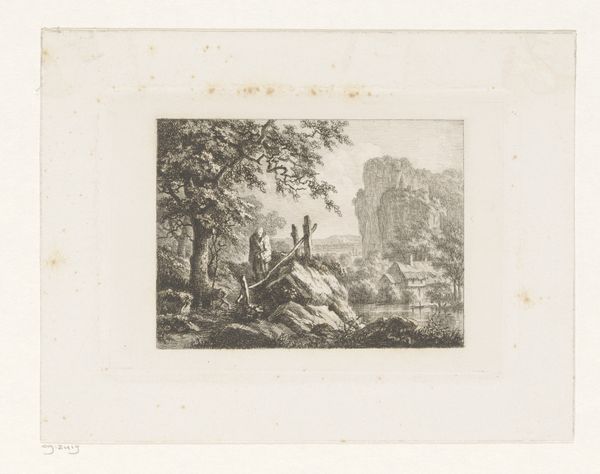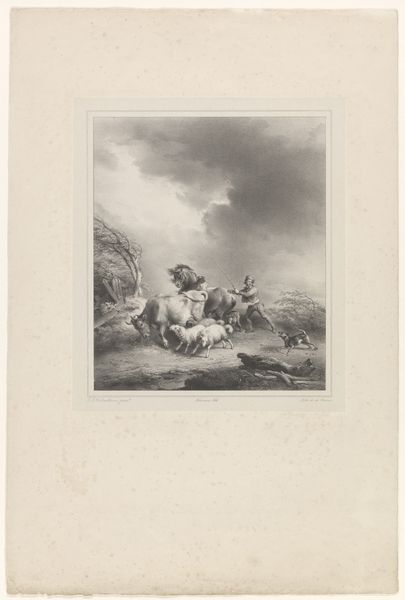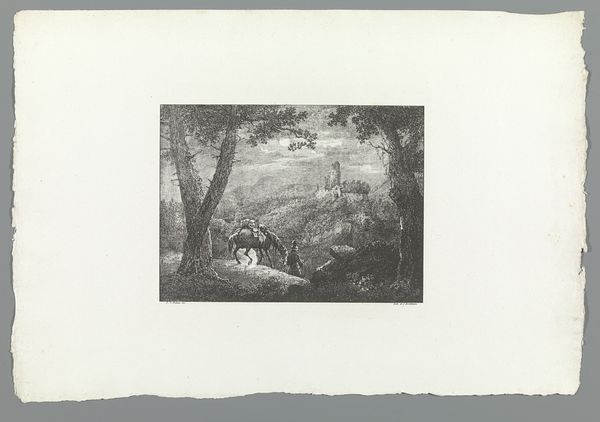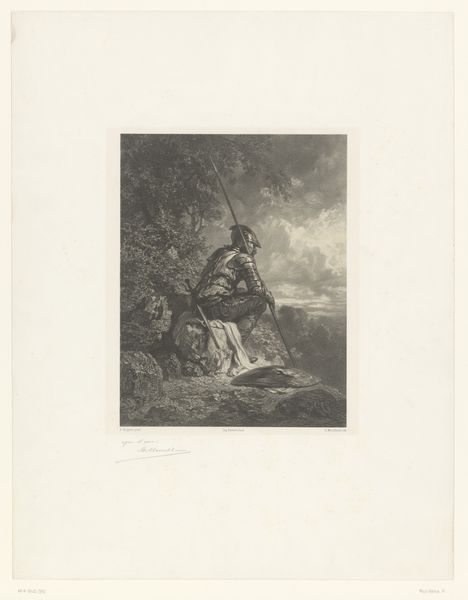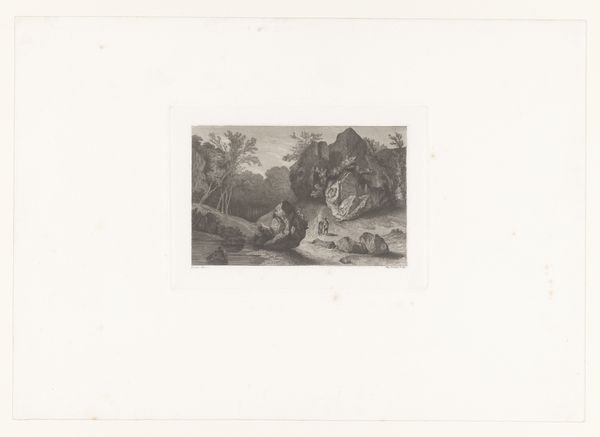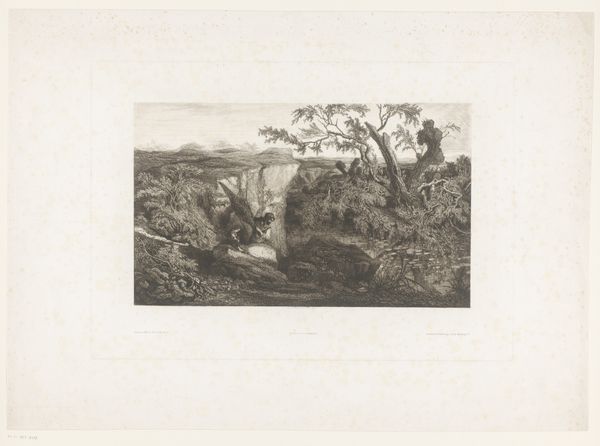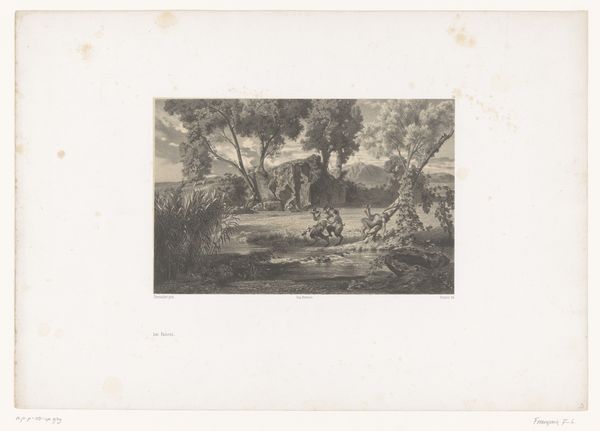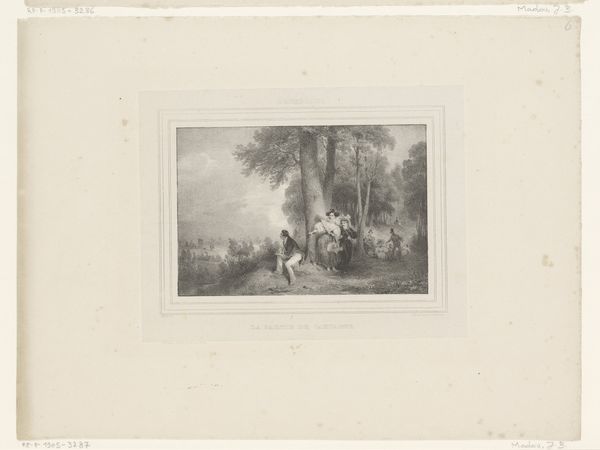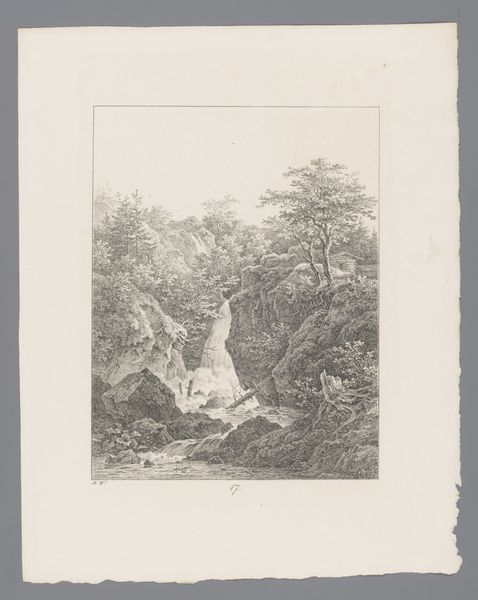
drawing, lithograph, print, etching, pencil
#
drawing
#
lithograph
# print
#
etching
#
landscape
#
pencil
#
realism
#
monochrome
Dimensions: height 364 mm, width 556 mm
Copyright: Rijks Museum: Open Domain
Curator: Here we have "Landscape with Deer," dating from around 1835, crafted by Théodore Fourmois. It's an intriguing print, combining etching and lithography. Editor: It’s beautiful, though a little somber for me. The greyscale really emphasizes the quiet solitude of the animals. You immediately focus on the buck. What did the process entail? Curator: Well, lithography, allows for tonal variety through greasy crayon on stone, providing those soft shades in the sky. And then the etching brings out sharper, more defined lines using acid to bite into a metal plate, see how that brings details of the stag and foreground textures to life? Editor: It looks so seamlessly done you wouldn’t necessarily separate it into lithographic and etched components, but focusing in makes it so clear. Was Fourmois part of a wider artistic trend employing combined methods to achieve different pictorial effects? Curator: Absolutely, he was contributing to the rise of realism and landscape art in Belgium at the time. We're witnessing a rising trend of appreciating the local rural landscape, not in the grand, theatrical style of Romanticism but a far more realistic portrayal of place and animals in nature. Editor: These types of prints also had an inherently reproducible nature, driving their commercial success. One could easily sell this piece or its likeness repeatedly to a larger public, thereby commodifying access to the ‘natural world.’ Did that expanded availability play a part in fueling this burgeoning appreciation for landscape paintings? Curator: It certainly democratized access to art. Instead of exclusive access to oil paintings for the wealthy, middle-class citizens now enjoyed prints and could partake in enjoying similar sentiments. So these kind of reproductions did more than mirror elite artistic tendencies. It shaped a new class that could engage with it, changing cultural preferences. Editor: So the reproductive techniques transformed both the way nature was portrayed in artwork, as well as who got to see and interpret these artworks. What a concept. Curator: It’s quite remarkable how methods of production shape cultural consumption. Thank you for helping me look at the piece with fresh eyes.
Comments
No comments
Be the first to comment and join the conversation on the ultimate creative platform.

